Sanctuary Director Robbie Fearn and Educator Pamela Fearn were recently joined by award winning photographer Bryan Putnam at our Donal C. O'Brien, Jr. Sanctuary at Pine Island for a special look behind the gates.
The sanctuary protects 2,600 acres of globally rare habitat on Currituck Sound—from extensive fresh water marshes to upland maritime forest—making the sanctuary one of the most important places for birds in the hemisphere. More than just habitat for migrating waterfowl to rest and overwinter, the sanctuary is home to all manner of creatures, from turtles, deer, and insects to wading birds, hawks, bluebirds, and more. No matter which way you turn, there will be birds!
Join Bryan, who was named 2023 Cape Fear Living Photographer of the Year and featured in the Audubon Photography Awards Top 100, for a tour of Pine Island and some of its spectacular winter residents.

I better nor get any of this muck on my fine feathers. Wind Tides expose marsh edges creating excellent foraging for Great Blue Herons.
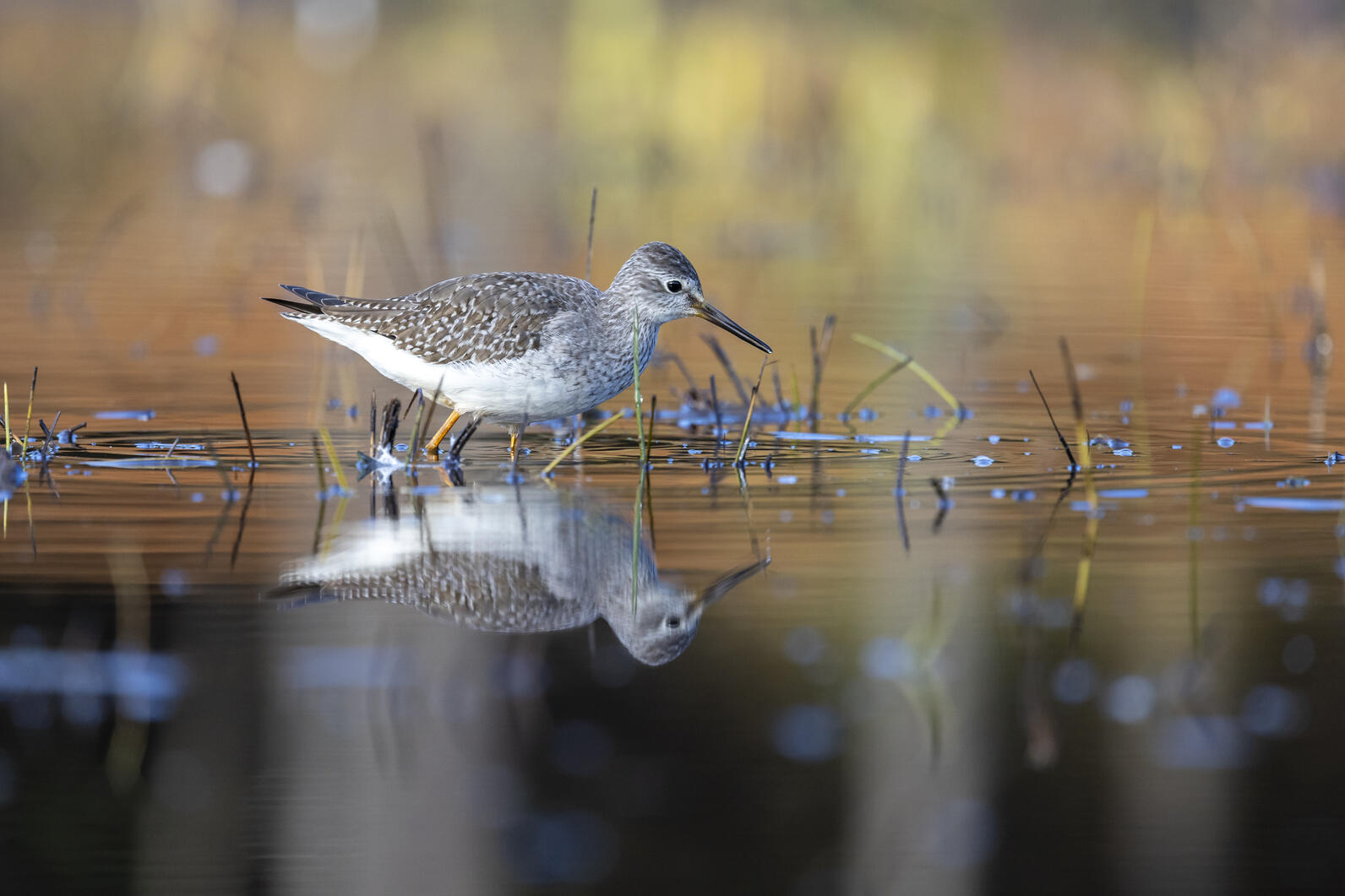
Mirror, Mirror on the pond, with a tasty bug – I'll abscond. Yellowlegs taking advantage of a waterfowl impoundment.
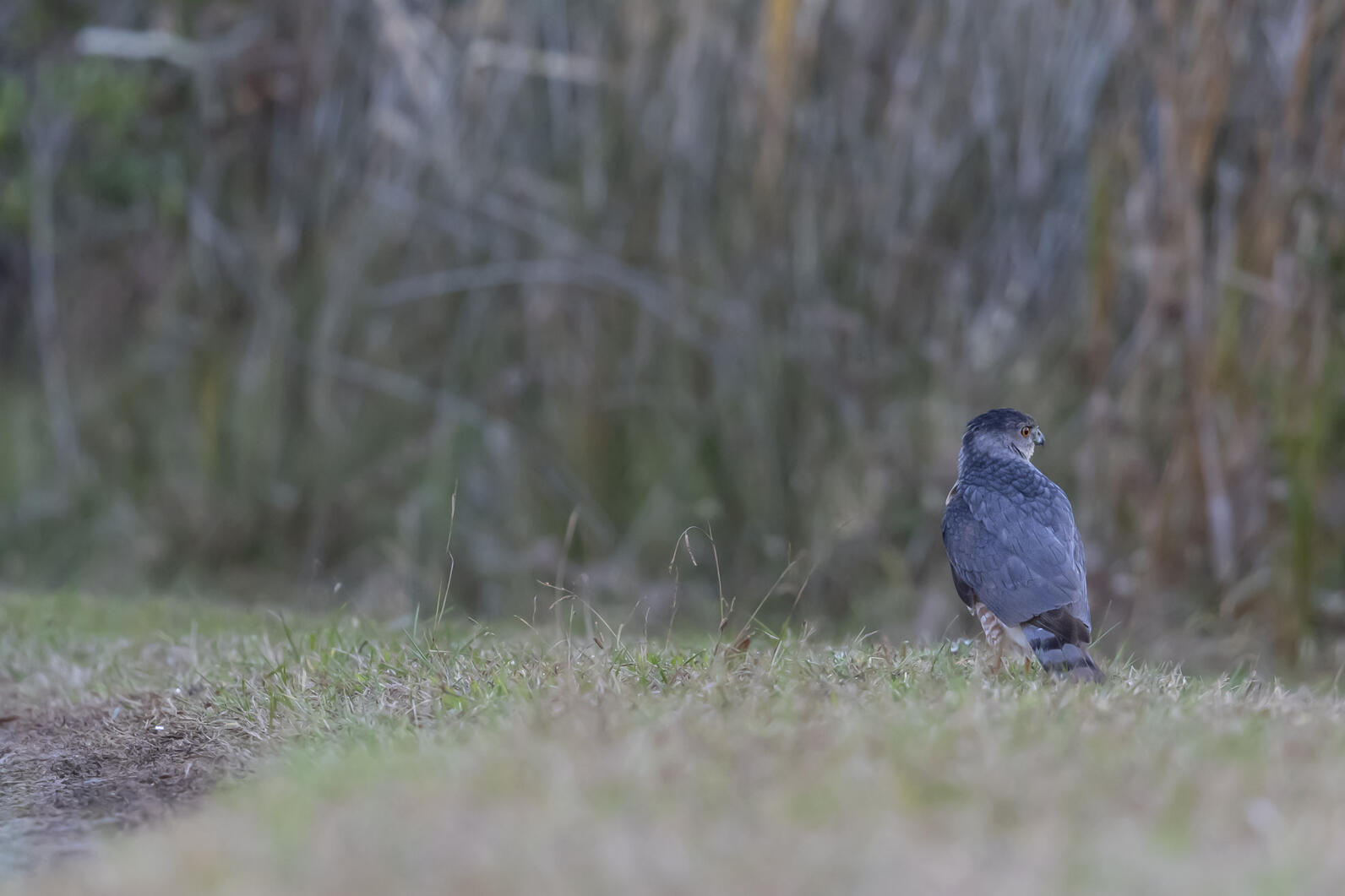
Preparing for take-off! Coopers Hawk on the alert.

Staring into the NW wind – looking for signs of Spring.
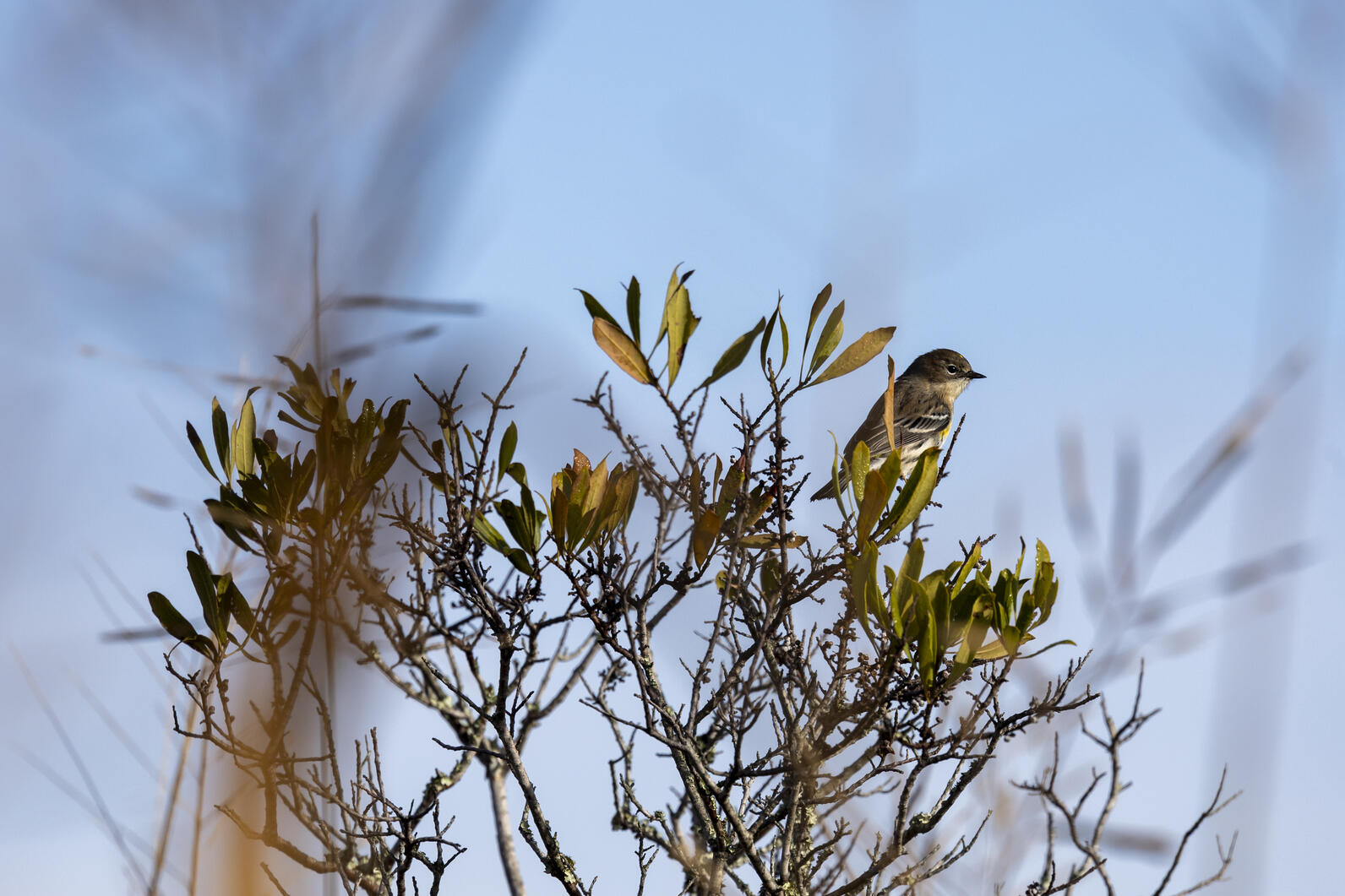
Yellow-rumped Warbler using a wax myrtle – looking for lunch! Unlike other warbler species that migrate further south, Yellow-rumpeds are able to survive the winter in North Carolina because they can digest the waxes found in wax myrtle and bayberres. Some 185 bird species call Pine Island home.
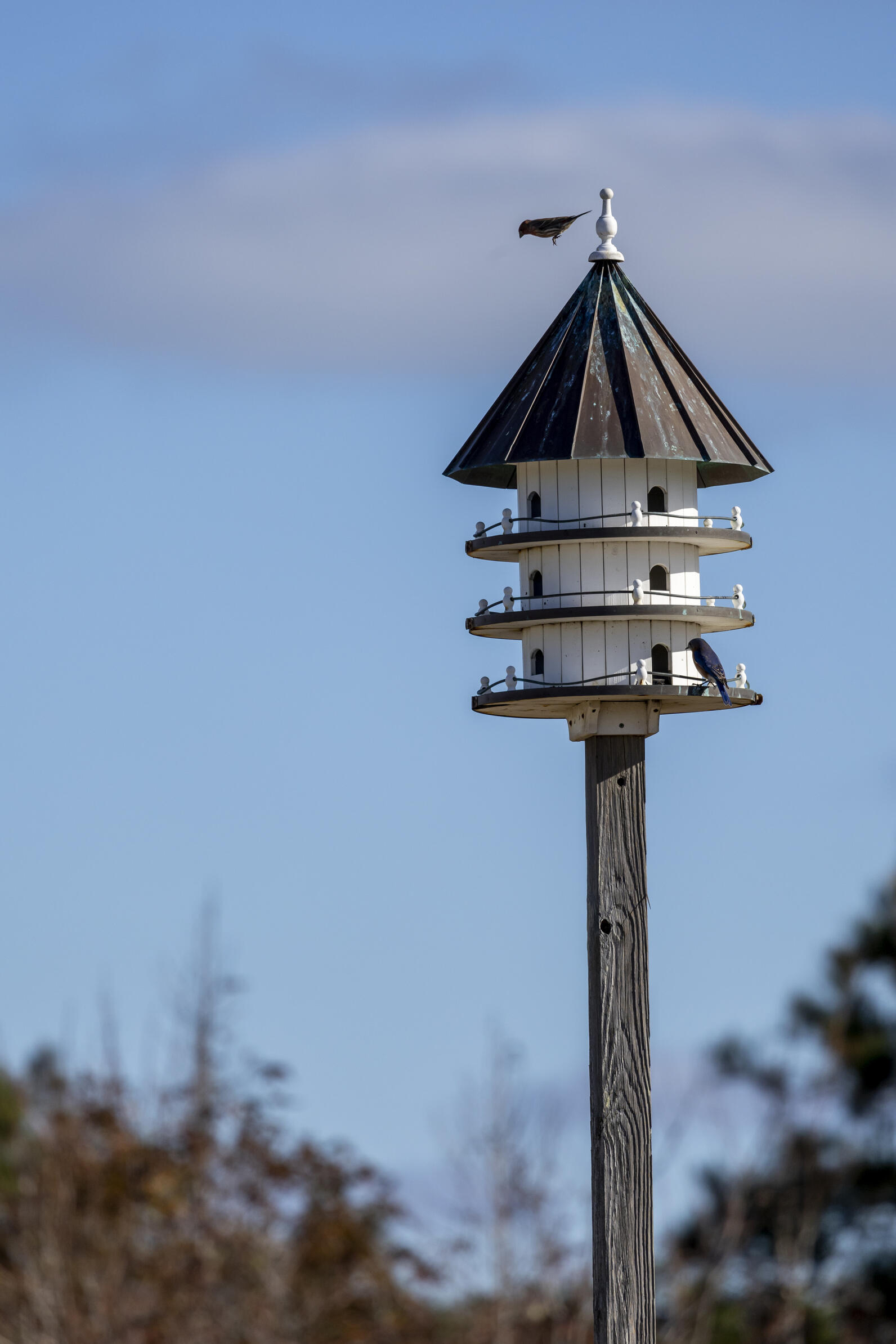
These Martin houses look nice! Maybe we should take the leap...
Martin houses on the sanctuary are used by large colonies of nesting Purple Martins in the spring and summer but serve as a nice perch for resting birds in the winter. Including these Eastern Bluebirds who commonly use single-occupancy bird boxes during the nesting season.
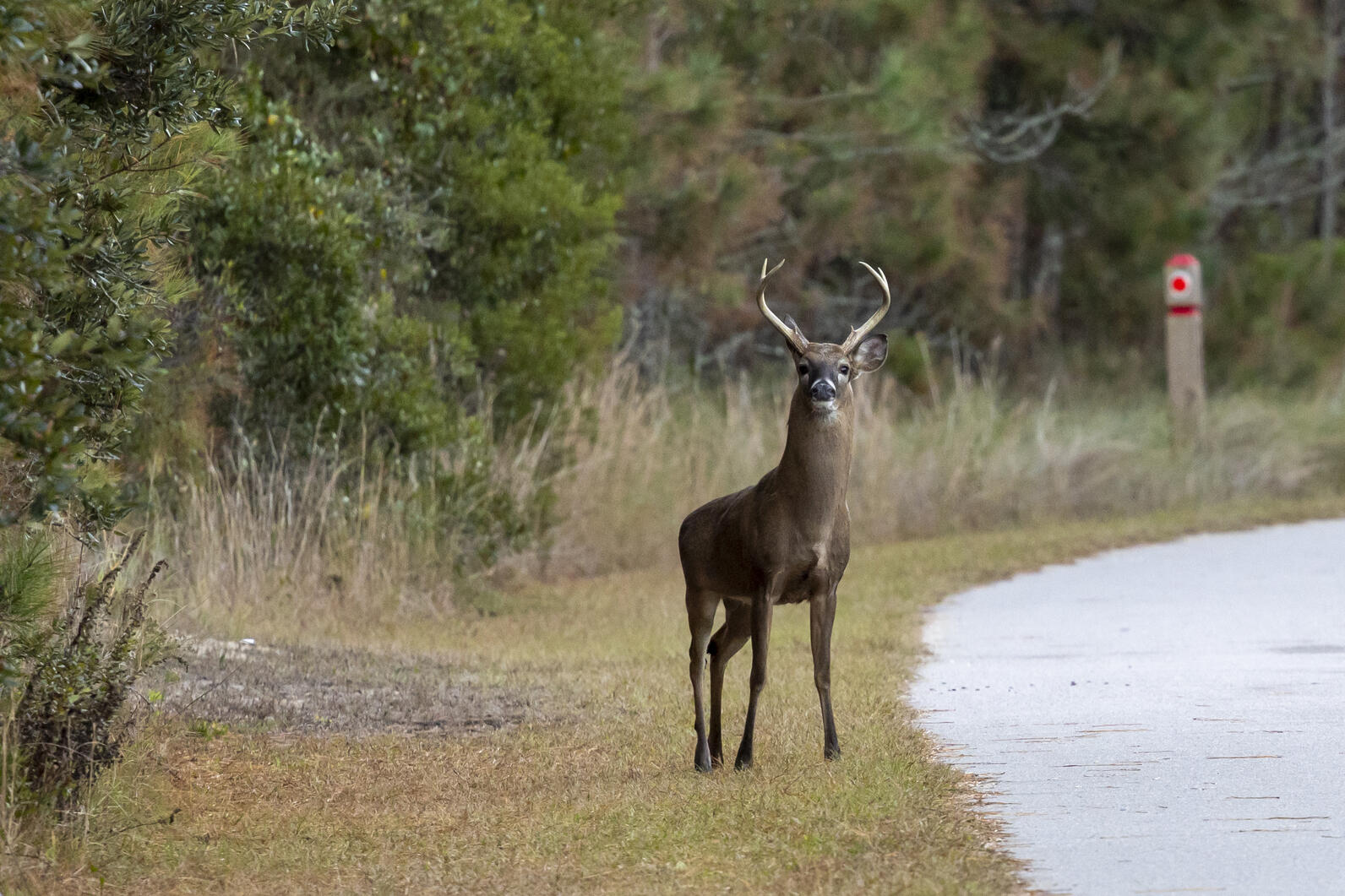
Grassy shoulders on an entry road make good grazing for big bucks (and many of our other 21 mammal species).
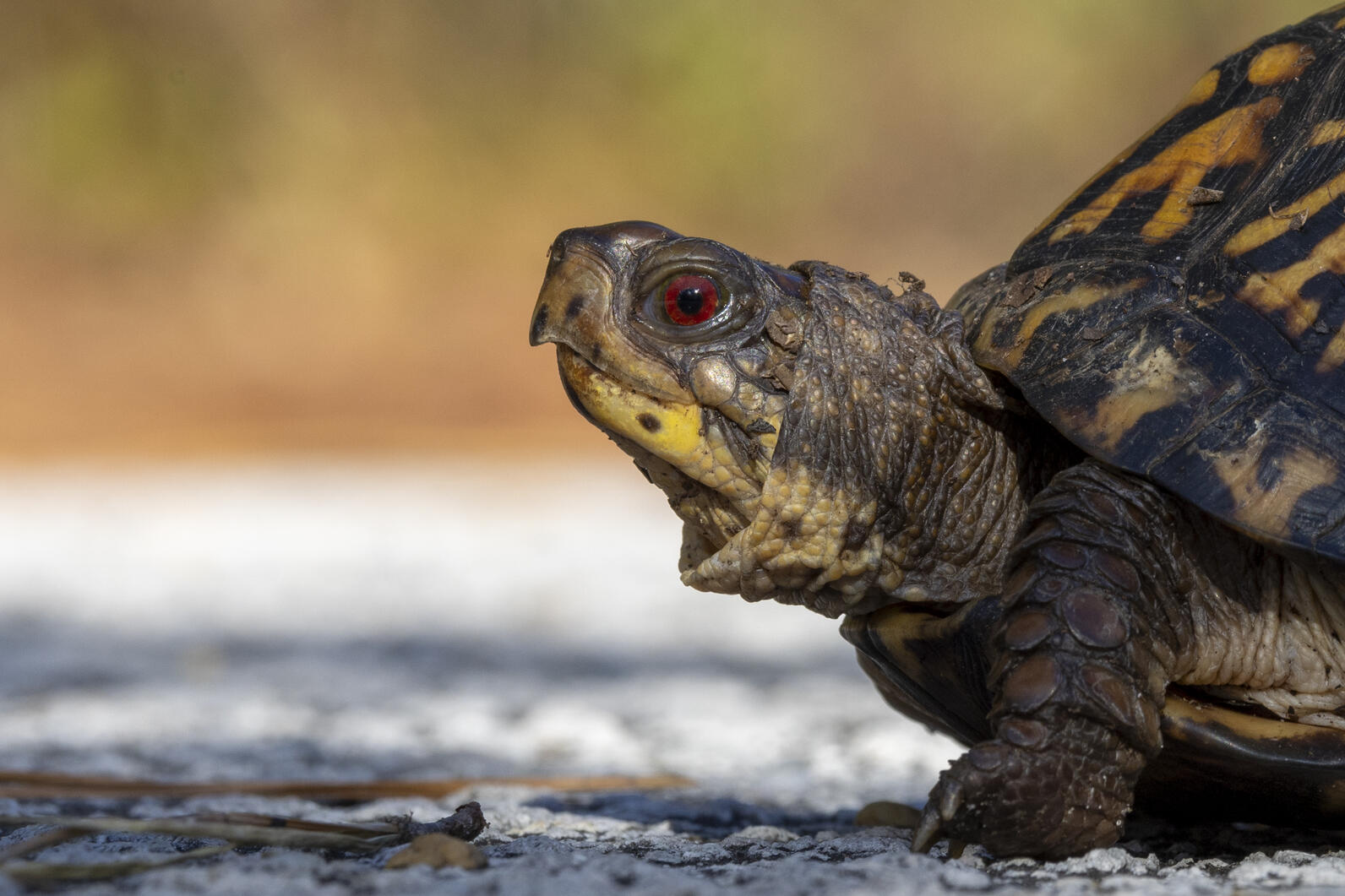
Warm days bring Box Turtles out to catch some Coastal Rays. They are amongst the 18 reptile species that call Pine Island home. (The amphibian species- some 9 species – are mostly quiet in the cold months).
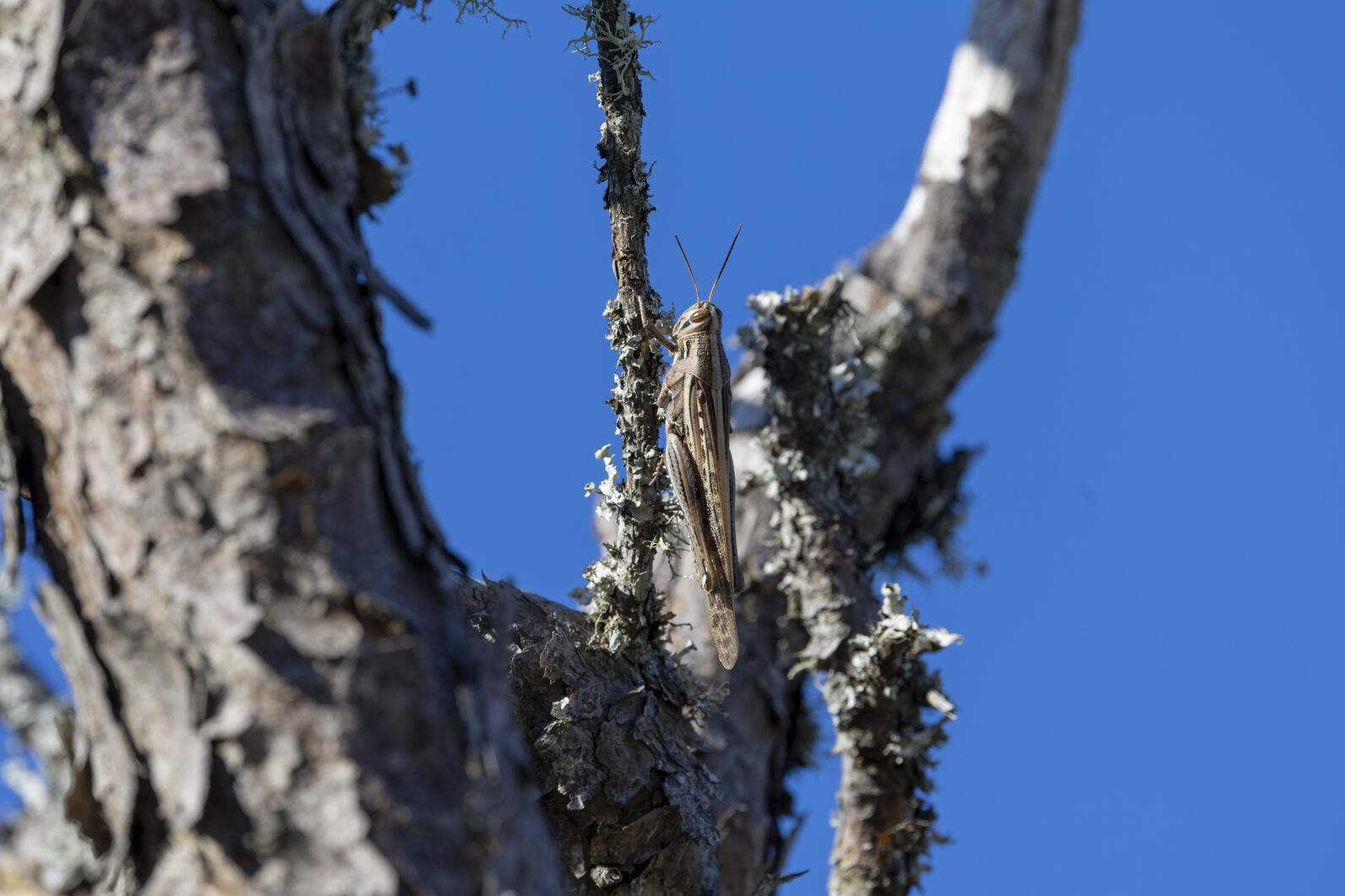
Camouflage in the lichen helps late season grasshoppers survive. Pine Island has 73 species of lichen and thousands of insect species – we are still counting!









